Visualizing bedroom designs with 3D software improves design accuracy. Users input dimensions, select furniture pieces, and choose finishes. This results in a comprehensive visualization. Studies show that 3D visualizations help users make decisions 60% faster than traditional 2D drawings. Designers and clients view potential designs from multiple angles, enhancing understanding and satisfaction.
3D software supports diverse design styles, including modern, minimalist, and traditional. Users customize with colors, textures, and lighting, reflecting personal tastes accurately. Real-time rendering technologies enable instant feedback, facilitating iterative design processes. These technologies simulate natural and artificial lighting effects, showing realistic day and night scenes.
Compared to 2D sketches, 3D models offer superior spatial awareness. Users perceive room sizes, furniture layouts, and décor placements more accurately in 3D spaces. Furniture catalogs in software contain items from various brands, offering extensive choices. Brands like IKEA, Wayfair, and Home Depot feature frequently, providing options from budget to luxury.
In the context of 3D design software, Arcadium stands out for interior designers and designer hobbyists. This browser-based tool enables users to create 3D house plans within minutes. Its simplicity and lack of complexity make it a favored choice for bedroom visualization projects.
Contents:
Choosing the Right 3D Software for Bedroom Design
What distinguishes various 3D software options in terms of features? Each option offers a unique set of tools tailored to different aspects of design work. For instance, some programs excel in providing an extensive library of furniture models, while others focus on advanced texturing capabilities for more realistic visuals. This variety ensures that users can find software that closely aligns with their specific needs, whether they prioritize a vast selection of decorative items or the ability to fine-tune lighting effects.
How do the interfaces of these software options vary? User-friendly interfaces attract novices, featuring straightforward navigation and intuitive tool placements. Conversely, professionals often seek out software with complex interfaces, allowing for detailed customization and precision in design. This divergence ensures that regardless of the user's proficiency level, there is a software option equipped with an interface that facilitates ease of use or offers comprehensive control.
What role does compatibility play in the selection process? Ensuring the chosen software runs smoothly on one's existing hardware is crucial. Software that requires minimal system resources benefits users with older computers, whereas programs designed with high-definition rendering in mind demand more powerful processors and graphics cards. This consideration guarantees that the software not only meets design needs but also is operational on the user's current setup.
In assessing software for bedroom design, the emphasis on a robust object library proves more beneficial than advanced rendering capabilities for users focused on conceptualizing rather than final visualization. Likewise, software with a gentle learning curve attracts a broader audience, contrasting with the narrower appeal of programs requiring extensive technical knowledge. These comparative aspects highlight the importance of aligning software choices with both the project's specific demands and the user's expertise.
Incorporating Key Elements of Bedroom Design
What colors define the mood and atmosphere you desire in a bedroom? Selecting the appropriate hues is pivotal. Warm tones like orange and red energize the space, whereas cool shades such as blue and green create a calming effect. The right combination enhances aesthetics, influences emotions, and sets the desired ambiance.
How can furniture shape the functionality and style of your bedroom? Choosing the correct pieces is essential. Beds, wardrobes, and nightstands serve as the backbone of bedroom design, dictating both practicality and visual appeal. Ergonomically designed furniture maximizes space, improves comfort, and elevates the room's overall look.
What role do lighting fixtures play in bedroom aesthetics? Selecting varied lighting sources is crucial. Task lights illuminate specific activities, ambient lights soften the room's overall glow, and accent lights highlight architectural features or artwork. Together, these lighting types balance illumination, enhance functionality, and enrich the bedroom's atmosphere.
Incorporating key elements of bedroom design significantly boosts both the room's functionality and its aesthetic appeal. A well-chosen color palette not only sets the mood but also visually enlarges the space, unlike monochromatic schemes which can make it appear smaller. Ergonomic furniture arrangement provides comfort and ease of movement, a stark contrast to cluttered spaces that restrict free flow. Varied lighting sources transform a bedroom from a mere sleeping area into a multifunctional space, which is not achievable with uniform lighting. These considerations ensure a harmonious and inviting bedroom environment.
Navigating 3D Software: A Beginner's Guide
How does one start with 3D software for bedroom design? Selecting an intuitive platform is crucial. Users find beginner-friendly interfaces facilitate quicker learning. Guides and tutorials enhance understanding, aiding users in mastering basic functions like dragging and dropping furniture models or altering wall colors.
What challenges might beginners face when navigating 3D design software? Understanding spatial relationships presents a common obstacle. Users must grasp how different elements such as beds, wardrobes, and nightstands relate within a confined space. Overcoming this requires practice, with error often leading to improved proficiency. Moreover, mastering lighting effects to mimic natural and artificial sources can transform a design from flat to photorealistic.
Are there benefits to using 3D visualization for bedroom design beyond the obvious? Absolutely. Visualizing in three dimensions aids in identifying potential design flaws, such as insufficient walking space or improper furniture placement, before actual implementation. This preemptive approach saves time, money, and frustration. The ability to experiment with various textures and finishes allows for a deeper exploration of aesthetic possibilities.
In the context of learning curves, 3D software designed with beginners in mind proves less daunting than advanced modeling programs used by professionals. Users encounter a more welcoming experience, with less emphasis on complex commands and more on user-friendly controls. As a result, individuals achieve satisfactory designs in a shorter timeframe, with fewer obstacles to their creative expression. This accessibility encourages ongoing use and experimentation, leading to progressively more sophisticated design capabilities.
Textures and Colors: Bringing Your Design to Life
How do textures enhance a bedroom's aesthetic? Textures add depth and warmth. Soft carpets comfort feet, while smooth metals provide a sleek contrast. Wall hangings can introduce tactile diversity, enriching the visual experience.
What role do colors play in bedroom design? Colors set the mood. Bright hues energize spaces, dark tones offer sophistication and mystery. A palette of pastels creates a calming sanctuary, demonstrating colors' power to influence emotions deeply.
Can the combination of textures and colors influence perceived space size? Absolutely. Light colors and smooth textures make rooms appear larger, airy. Conversely, dark shades and rough materials lend a cozy, intimate feel, manipulating space perception with strategic choices.
In the visualization process, textures and colors serve as crucial elements for imbuing life into designs. Light colors outshine dark tones in amplifying room brightness, whereas varied textures surpass smooth surfaces in adding character and depth. These elements work synergistically, not just enhancing the visual appeal but also crafting an atmosphere that reflects personal taste and style preferences.
Furniture Placement Strategies in 3D Environments
How can furniture placement strategies optimize the space within a bedroom? Efficient space utilization becomes paramount. Beds, wardrobes, and desks occupy significant floor area. Optimal arrangement enhances movement flow and creates an illusion of spaciousness. Distinct strategies, such as positioning the bed against the central wall and ensuring wardrobes are closer to entrance areas, serve to maximize accessible space while maintaining aesthetic appeal.
What impact do different furniture dimensions have on bedroom visualization? Accurate representation is key. A king-size bed differs vastly from a single bed in both space occupation and function. Utilizing 3D software allows for precise scaling, offering a realistic view of how various pieces, including nightstands and dressers, fit together within the environment. This approach aids in identifying potential overcrowding or underutilization issues before making any physical changes.
Why is it crucial to experiment with multiple layouts in a 3D environment? Flexibility in design exploration offers invaluable insights. By testing various configurations, from minimalist to more elaborate setups, users gauge functionality and aesthetic harmony. Chairs might be moved from a desk to a corner nook, or lamps might be repositioned to enhance lighting and mood. Each modification provides immediate feedback on the feasibility and impact of design choices, fostering a deeper understanding of the space's potential.
In a 3D environment, visualizing furniture placement allows for more creative freedom than traditional pen-and-paper sketches. Users can manipulate objects in real-time, assessing not only practicality but also the emotional resonance of each arrangement. Natural light simulation offers a comparison between the effectiveness of different window treatments in enhancing or muting illumination. Ultimately, the flexibility of dragging and dropping pieces within a digital space surpasses the static nature of physical models, presenting a dynamic canvas for exploration and refinement.
Lighting Effects in 3D Bedroom Visualizations
How do different lighting setups impact the ambiance of a 3D bedroom design? Significantly. Ambient lighting creates a warm, welcoming space, while spotlights can highlight artwork or architectural features. Pendant lights, a subtype of ceiling fixtures, add style and focus over specific areas such as nightstands.
What role does natural light play in 3D visualizations? A crucial one. Large windows allow sunlight to flood the space, showcasing textures and colors in their true form. Curtains and blinds, types of window treatments, control this natural illumination, affecting the mood and perceived size of the bedroom.
Can shadows enhance the realism in 3D bedroom designs? Absolutely. Shadows add depth and a sense of realism, making the digital creation feel more tangible. Furniture like beds and wardrobes cast shadows, which can either soften or dramatize the overall effect, depending on their direction and intensity.
In 3D bedroom visualizations, lighting not only dictates the atmosphere but also guides the viewer's attention. Areas bathed in light attract the eye, whereas dimmer sections hint at relaxation or mystery. Natural light showcases colors with more fidelity than artificial sources, which can alter hues and saturation. Hence, lighting effects, whether through sunbeams or lamps, become the storyteller in these digital spaces, crafting scenes that evoke emotions and responses unique to each viewer.
Realistic Rendering Techniques
How do realistic rendering techniques transform a flat design into a visually rich experience? By mimicking natural light, shadows, and textures. Light rays diffuse softly across surfaces, casting shadows that add depth and texture to materials like linen, silk, or cotton, making them appear soft to the touch. Textures for wood, metal, and glass are rendered with precise reflections and grain details, distinguishing oak from maple, steel from aluminum, and tempered glass from frosted.
What sets realistic rendering apart in visualizing bedroom designs? The accurate simulation of environmental effects. Morning light streams through a window differently than the soft glow of a sunset, changing the ambiance of the bedroom scene. Weather conditions such as rain or snow alter the visual mood, with droplets or frost creating patterns on windows, introducing a sense of seasonality. The portrayal of indoor plants, from succulents to ferns, includes variations in greenery shades and leaf textures, contributing to an atmosphere that feels alive.
Why are material properties crucial in realistic rendering? They ensure authenticity. Fabrics drape and fold in ways that imply weight and flexibility, from the heavy velvet of curtains to the lightness of a silk duvet. Metals reflect light with a sheen specific to their type, making brass appear warmer than silver. Woods show grain and age, with older woods appearing darker and more textured than newly cut planks, offering a sense of history and craftsmanship.
In realistic rendering, details such as the play of light and shadow, material authenticity, and environmental effects elevate the visual experience significantly beyond basic 2D sketches. Textures become palpable, lighting sets the mood, and materials tell a story, crafting spaces that invite immersion and interaction. Through these techniques, designers bridge the gap between imagination and reality, providing clients with a glimpse into the potential of their future bedroom spaces.
Sharing and Collaborating on Bedroom Designs
How does sharing and collaborating on bedroom designs enhance the creative process? It fosters innovation. When designers share ideas, they combine their individual talents, leading to unique and diverse bedroom concepts. Feedback from peers introduces new perspectives, refining the design further.
What tools assist in efficient collaboration on bedroom designs? Many 3D software options include features like cloud-based sharing and comment sections. These functions allow team members to upload their designs for review and receive constructive criticism directly on their work. Simultaneously, version control ensures that the latest updates are always accessible, preventing any confusion over modifications.
Why is real-time collaboration important in bedroom design? It accelerates decision-making. Designers can make changes instantaneously, allowing for quick adjustments based on collective input. This instantaneity ensures that projects move forward without unnecessary delays, keeping timelines short and productivity high.
In terms of project execution speed, teams using 3D software for sharing and collaborating on bedroom designs operate more efficiently than those relying on traditional methods. Without the need for physical meetings or sending files back and forth, the design process is streamlined. Designers can implement immediate changes, making the overall workflow smoother and faster. This efficiency not only saves time but also significantly reduces the risk of miscommunication, ensuring that the final product closely aligns with the client's vision.


 All training, tips and articles
All training, tips and articles
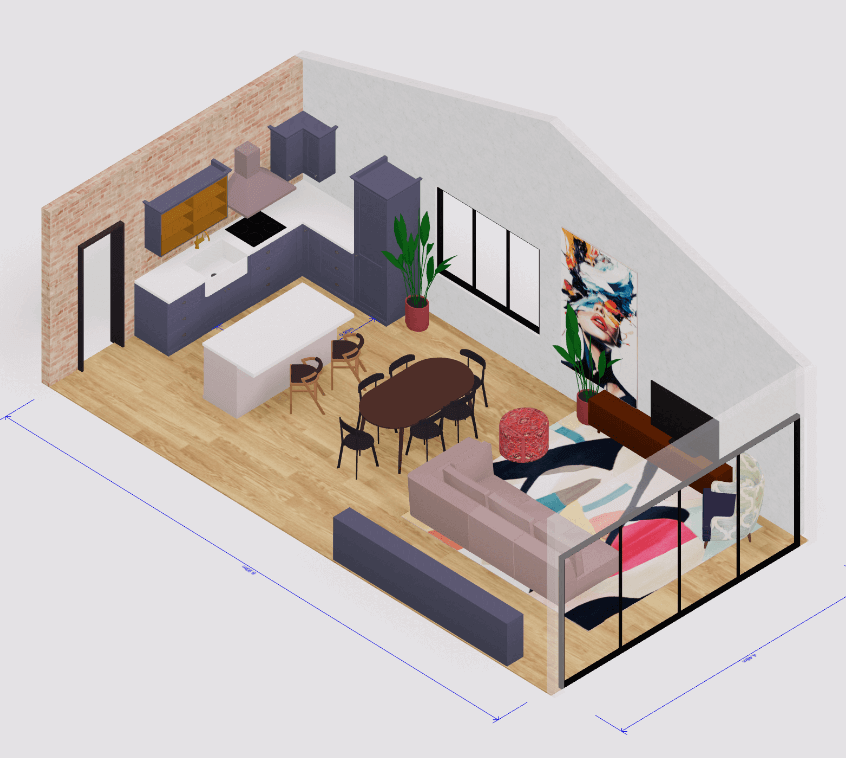 3D house design tool
3D house design tool
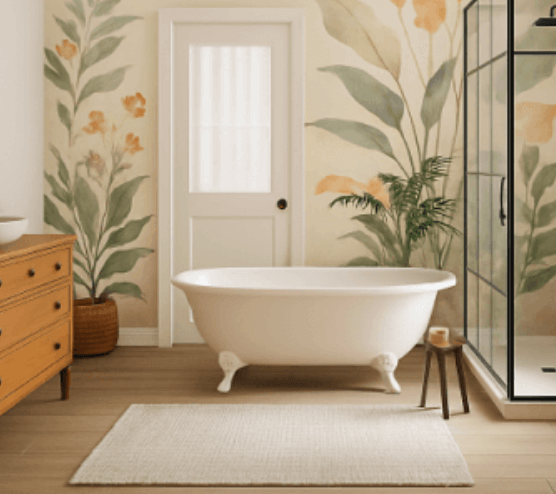
 Color palette generator
Color palette generator
 Floor plan creator
Floor plan creator
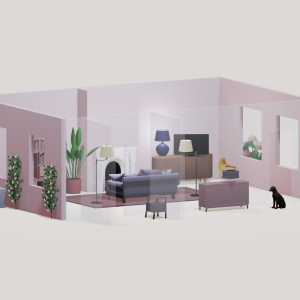 Interior design app
Interior design app
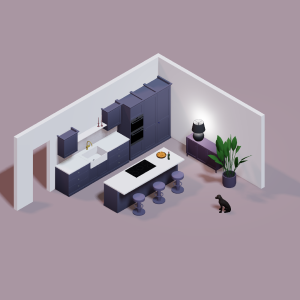 Kitchen design tool
Kitchen design tool
 House design software
House design software
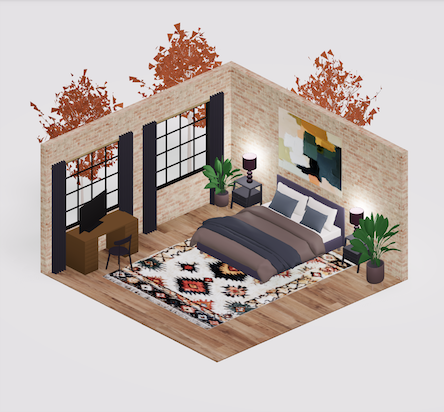 Room designer
Room designer
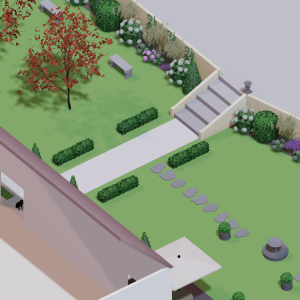 Landscape design software
Landscape design software
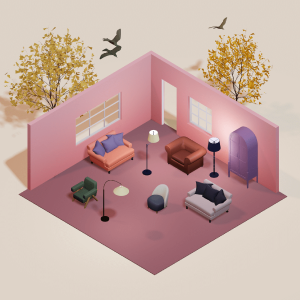 Bedroom design
Bedroom design
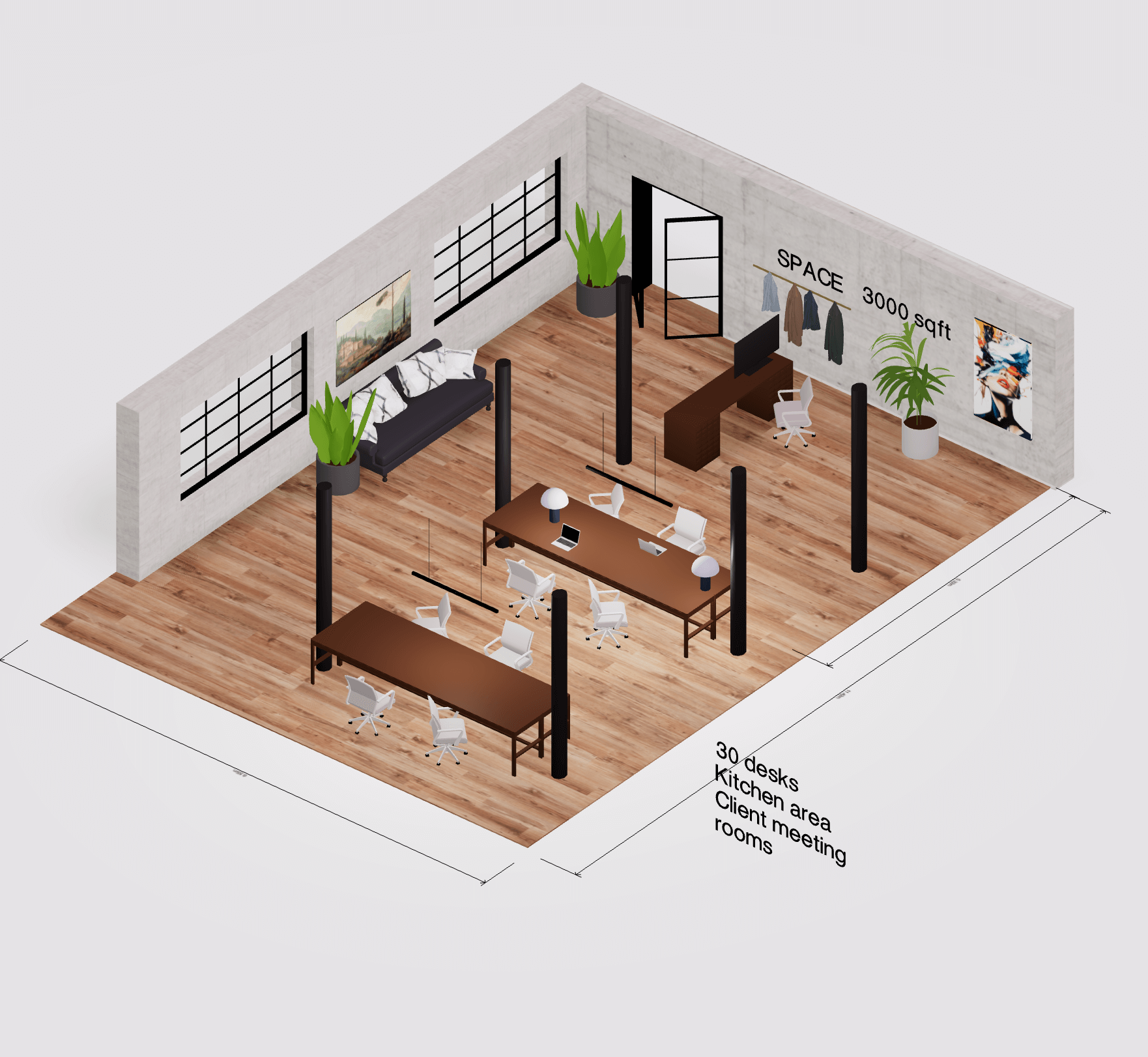 Office floor plan creator
Office floor plan creator
.png)



